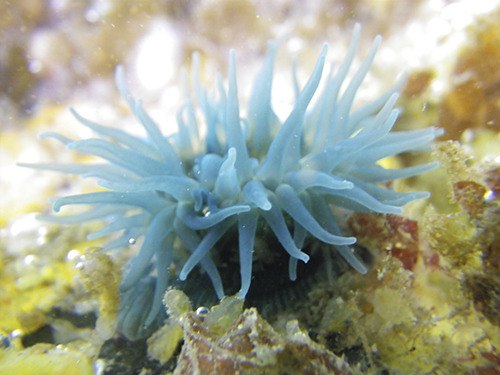Kwiaht and the Fisherman Bay Marine Health Observatory invite you to a day of field trips including birding, botany, bats, and boating. It’s all free.
The fourth annual Day for the Bay is Sunday, July 20, and offers family-friendly activities from 9 a.m. to dark. Learn about the dunes on Fisherman Bay Spit with Tim Clark of the San Juan County Land Bank, or explore salt marsh plants at Weeks Wetland with Kwiaht’s Madrona Murphy. Visit morning and evening seabird viewing stations at Otis Perkins Park with Kwiaht wildlife biologist Joe Behnke and bird photographer Peter Cavanagh. Or eavesdrop on bats at sundown with Russel Barsh.
Register in advance for boat tours of the bay that explore changing shorelines and demonstrate research methods such as netting plankton and dredging sediments. Walk the docks with periscopes and a special real-time underwater camera to discover the colorful sea anemones, sea cucumbers and “sea squirts” that thrive on artificial structures. Or seat yourself at a microscope on the Kwiaht office patio and discover the strange micro-world of plankton from the delicate silica shells of diatoms to voracious rotifers as small as dust specks.
Kwiaht landscape ecologist Nathan Hodges’ will present concepts for a network of “green corridors” (bioremedial gardens and trails) in the village in a canopy display at Lopes Plaza and an afternoon village walkabout.
This year’s poster by Laine Nichols features silvery Shiner Perch and bright pink flowers of Henderson’s Checkermallow. Shiner Perch are tolerant of warm shallow water and one of the last fish species to thrive in Fisherman Bay. Checkermallow is a rare plant found in the islands only at Fisherman Bay and Roche Harbor. It reminds us that there are still some important biological treasures to save around the bay.
“The structure, chemistry and ecology of the bay have been changing very rapidly since the 1960s,” says Barsh. “The bay is becoming shallower and warmer, with more silt and less oxygen.” At the same time, he says, stormier winters will result in more seasonal tidal flooding and erosion, affecting roads, homes, and utilities along the shoreline. “This is the time to begin working to reduce pollution and adapt to climate change.” Kwiaht has begun designing experimental bioremedial gardens and “living shorelines” to test around the village and the waterfront.
For a complete schedule of activities on July 20, visit the Kwiaht website, Lopez Rocks, or send an email to kwiaht@gmail.com. You can also visit the Kwiaht laboratory in Lopez Plaza; or the Fisherman Bay Marine Health Observatory canopy, which will be at the July 19 Farmers Market, and at Lopez Plaza on July 20. Use kwiaht@gmail.com or visit the Fisherman Bay Marine Health Observatory canopy to register for boat trips.





